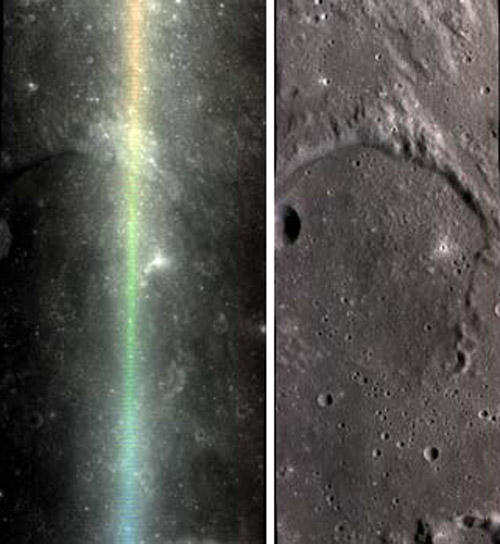November 5, 2012
Surging Color
 image from NASA/ASU |
At first glance the left image seems to be a multispectral view of the center line of the Milky Way. But looking closely at the faint background - expecially after comparing it with the right image - reveals a lunar crater, not galactic wisps of dust and gas. As the Lunar Reconnaissance Orbiter spacecraft flies in its polar orbit the Wide Angle Camera takes a series of images through different filters. The left colored image was constructed from three of these sequential exposures through filters that are here displayed as red, green and blue. Can you see that the top of the image was taken through the filter here displayed as red? And the middle part of the image was with the "green" filter and the bottom with the "blue" one? A question you should ask is why doesn't the color image on the right, taken with the same filters, show the same color line? Notice the different phases of the two images? The right one was taken with relatively high Sun but the left one is exactly at full Moon, that is, the Sun was directly behind LRO. The Moon has a remarkable surge in brightness when the Sun is directly overhead because there are absolutely no shadows then - the brightness increases 40% in the last few degrees before perfect full Moon. From LRO's point of view there is one dot of surge brightness and that dot moves along the ground track under the moving spacecraft, creating a colored line. Chuck Wood |
Yesterday's LPOD: Is It Real?
Tomorrow's LPOD: Seen Before, Seen Anew
COMMENTS?
Register, Log in, and join in the comments.



